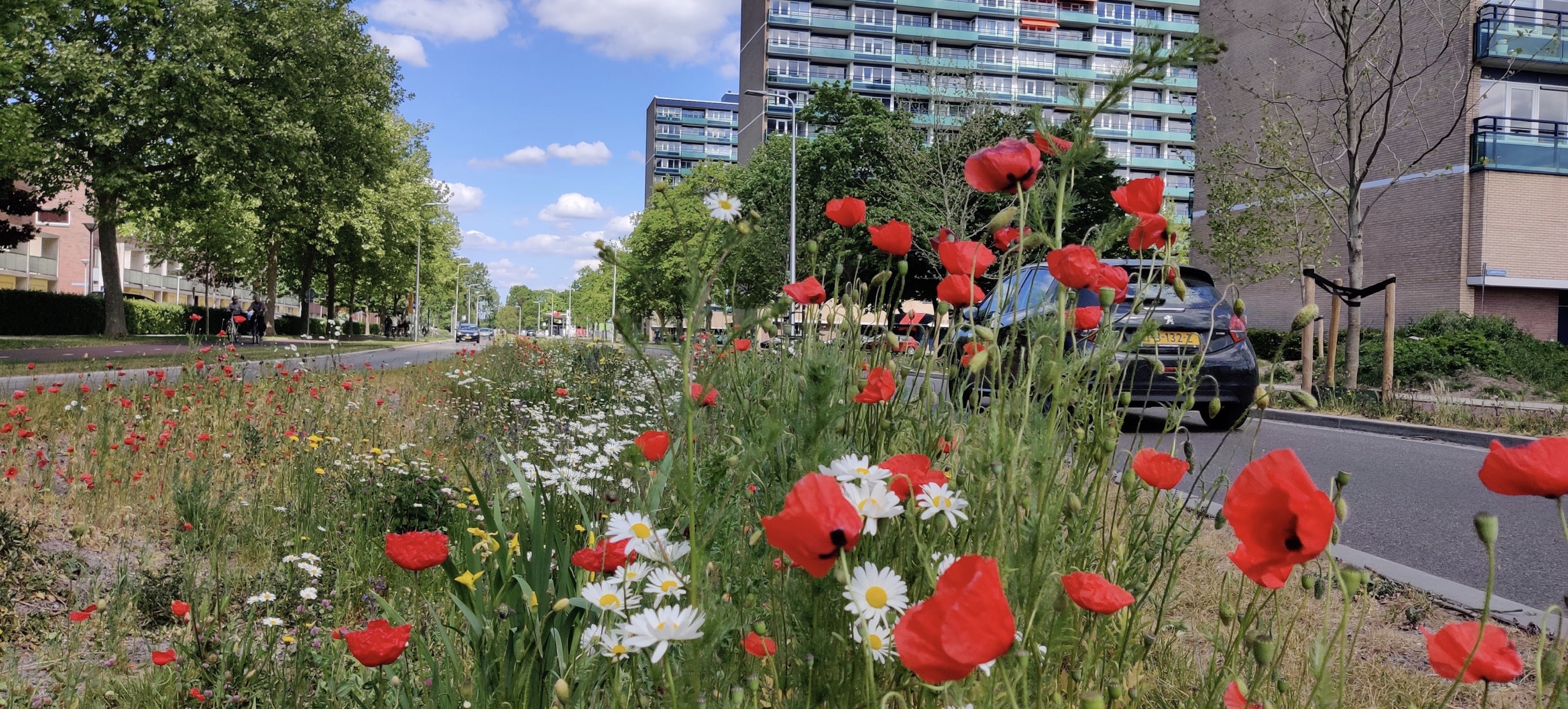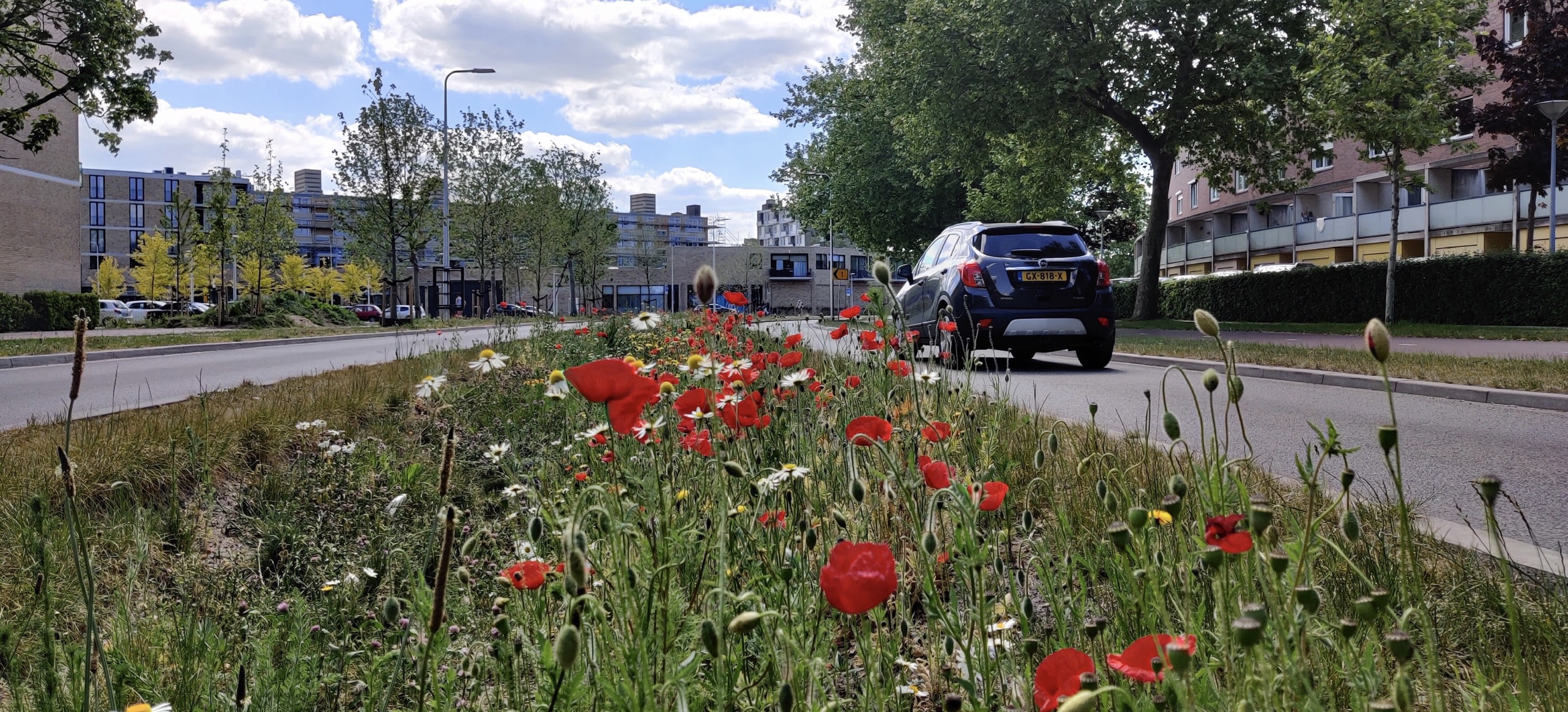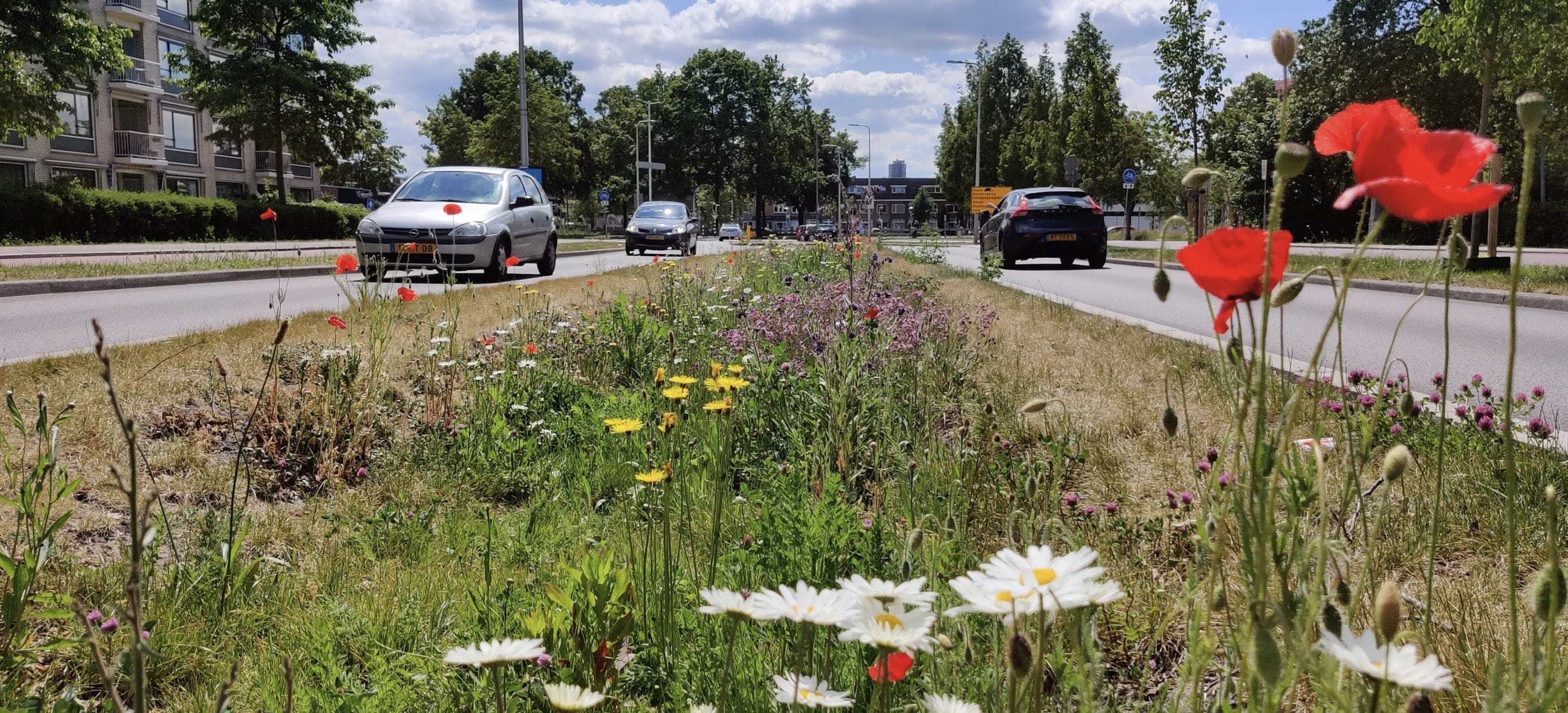
- Inspiring People -
- 3mins -
- 1,981 views
Dutch city turns roadside into stunning wildflower bed
Roadside flowerbeds in Utrecht not only look sensational but stimulate the city’s biodiversity by providing urban habitat for insects such as the world’s most important living being… the bee!
Roadside wildflower haven for bees and insects
This roadside in Utrecht, the Netherlands, covered in wildflowers does not only look stunning, it has many benefits, including flood prevention and stimulating the city’s biodiversity by providing a habitat for insects such as the world’s most important living being… the bee!

Dutch city brings busy road to life and bees love it!
The principal advantages of wildflower meadows are ecological, economic, and aesthetic. Aside from being an urban haven for all sorts of insects and pollinators, wildflower meadows also help reduce pollution by by trapping and filtering airborne pollutants.
Furthermore, this wildflower roadside significantly contributes to the prevention of groundwater buildup; a very real concern in a country that lies one-third below sea level. The bed has been made into a “channel”, allowing stormwater to sink into the ground.
Utrecht already gained worldwide interest in 2019 when it turned 319 bus stops into “bee stops” with green roofs. The roofs mainly have sedum plants. They are maintained by municipal workers who drive around in electric vehicles.
Last summer, BrightVibes published an article about the South Yorkshire town of Rotherham, which has been planting wild flowers along eight miles of highways for the past six years.
As well as producing a sensational splash of colour throughout the summer months, it provides a urban habitat for many insects, including bees. Great news for the environment, and the scheme also helps the council save around £23,000 in mowing costs per each two-year cycle.
Would you like your city to follow suit?

Dutch cities must hurry to take action against the increasing flooding
According to engineer Tim van Hattum of the university in Wageningen, municipalities need to be redesigned to absorb so-called peak showers.
In summer or spring, there are huge downpours in the Netherlands due to climate change. The sewage system cannot process that amount of water sufficiently quickly, so streets are flooded and sometimes the houses and basements are flooded.
Van Hattum especially argues for more green in the city. So more is needed in the city of Utrecht to make the city water resistant. Wherever possible, the municipality will build wadis, such as at Eykmanlaan. The central reservation is no longer a regular verge there, but there is now a long channel between the two lanes. A so-called wadi, where the water is collected and slowly sinks into the ground.
Michiel Rijsdijk from the municipality of Utrecht: "That pit provides storage, so the water can remain there just like in a bath and slowly withdraw into the bottom."
According to van Hattum, this is a great solution for such a wadi, but things can go a bit faster: "All municipalities have to work hard to deal with this problem. But all the measures they have to take and Certainly when it comes to green measures, at the same time there is an enormous opportunity to make your city more beautiful, attractive and pleasant to live in."
Translated from Dutch.
Source: RTV-Utrecht



